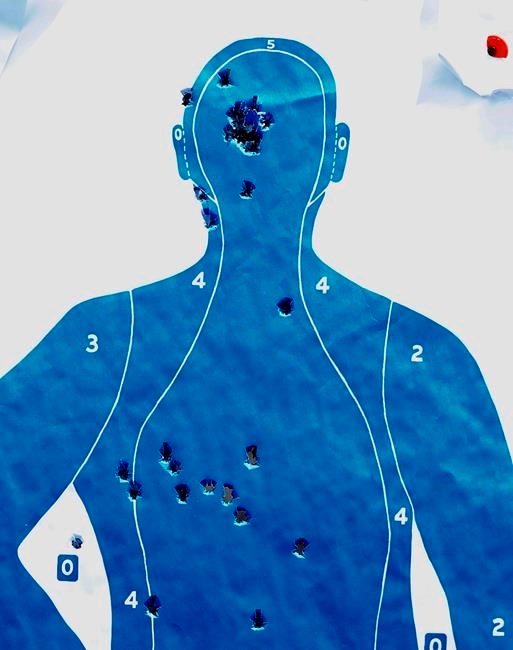OTTAWA — The RCMP has told owners to turn in what the force is calling fully automatic military surplus firearms after hundreds were misidentified and allowed into Canada for commercial sale.
The Mounties say the registrar of firearms immediately froze records relating to the 245 prohibited guns upon discovery of the issue to prevent further sale or transfer of the firearms.
The registrar believes three firearm businesses imported and registered the guns as semi-automatic Tavor X95s that are classified as restricted firearms and can be sold in Canada.
However, the RCMP says that upon physical inspection it was determined the firearms are actually fully automatic Tavor X95 MSWs, which are prohibited in Canada.
Rod Giltaca, chief executive officer of the Canadian Coalition for Firearm Rights, said several people who received a revocation notice told him the firearm they purchased was semi-automatic, meaning it would have been converted from fully automatic at some point.
"Nobody knew that it was converted. They just know they have a semi-automatic rifle," Giltaca said Thursday.
Under the law, such a converted firearm would still be prohibited and subject to revocation, he said.
"My main concern is that Canadians don't think that there's fully automatic military surplus firearms floating around Canada in the hands of licensed gun owners."
Within 30 days of receiving a revocation notice, individuals and businesses must deliver the prohibited firearms to police or a firearms officer, lawfully dispose of them or contest the decision in provincial court.
The Mounties say the misidentification is being investigated.
An image of an Oct. 5 revocation notice circulating on social media indicates the problem was discovered when the Canadian Firearms Program, administered by the RCMP, conducted a technical inspection of guns imported by firearm businesses.
"These Tavor X95 MSW firearms would not have been permitted entry into Canada had they been properly verified as prohibited firearms," the notice says.
Under section 71 of the Firearms Act, the registrar may revoke a registration certificate for a restricted firearm for "any good and sufficient reason."
Any questions about compensation should be directed to the supplier or distributor from whom the buyer acquired the firearm, the notice says.
Tavor X95 firearms, assembled by IWI US, Inc., are purpose-built semi-automatic guns and are either non-restricted or restricted depending on barrel length, the Mounties say.
However, the Tavor X95 MSW is a fully automatic military surplus firearm from Israel.
"The two makes and models are different and technically distinct firearms," RCMP Sgt. Kim Chamberland said in response to questions.
"Individual licence holders are in illegal possession of these prohibited firearms inadvertently."
The RCMP did not immediately answer follow-up questions Thursday about whether any of the 245 firearms had been converted to semi-automatics.
If an owner refers a revocation notice to a provincial court judge, they may keep their firearm and registration certificate until the outcome of the hearing.
On its website, Canada's National Firearms Association urges recipients of the notice to contact the association immediately "for legal guidance in regard to these revocations."
Blair Hagen, the association's executive vice-president, told The Canadian Press that the firearms organization is "assisting owners of this property."
The misidentification comes as the Senate studies Liberal gun-control legislation that includes a ban on assault-style firearms that would fall under a new technical definition.Â
The definition would apply to such guns designed and manufactured after the bill comes into force.
The government has also promised to make regulations under the Firearms Act with the aim of ensuring that guns are classified correctly before entering the Canadian market by requiring a valid firearm reference number.Â
It says this would ensure the government is aware of the presence of new makes and models of firearms before their entry into the domestic market.Â
However, the existence of a firearm reference number did not appear to help in the Tavor case.
The RCMP says the firearms were imported and registered using a firearm reference number that corresponds to the semi-automatic Tavor X95, instead of the reference number for the Tavor X95 MSW.
Gun-control groups PolySeSouvient and Danforth Families for Safer Communities said in a letter last spring to Marco Mendicino, public safety minister at the time, that a preauthorization process "for dangerous products like guns should have been in place a long time ago."
However, they expressed concern that the proposed federal system wouldn't be rigorous enough.
"An effective pre-authorization process aimed at preventing misclassifications must include mandatory physical inspection by the RCMP before manufacturers can introduce a new model on the Canadian market," the letter said.
This report by The Canadian Press was first published Oct. 19, 2023.
Jim Bronskill, The Canadian Press

